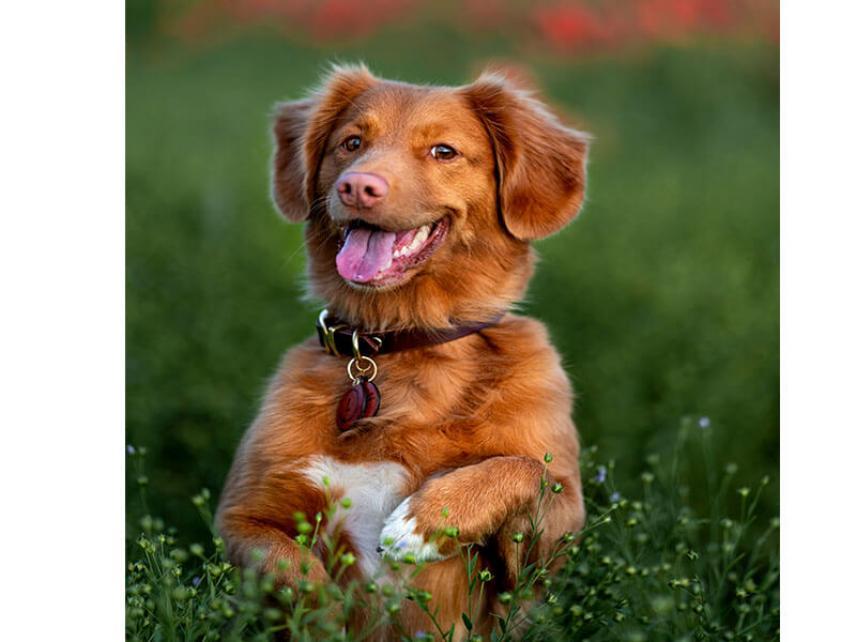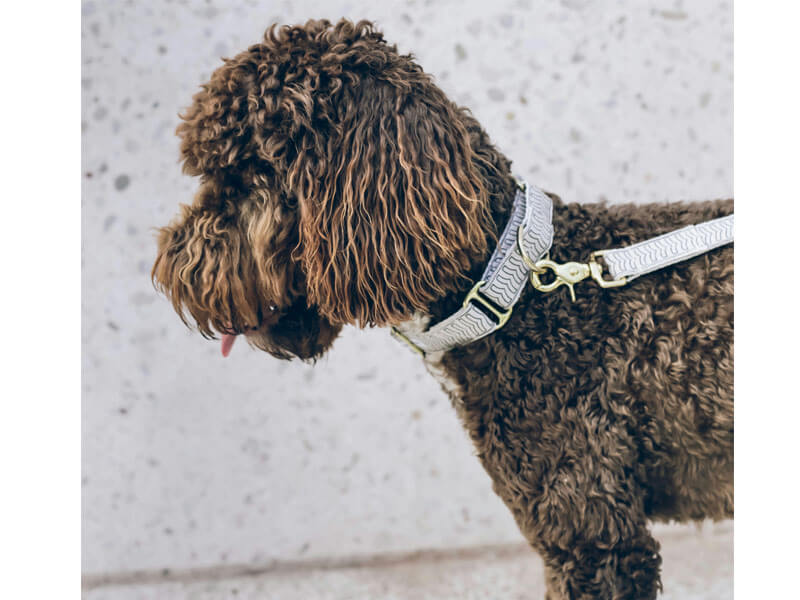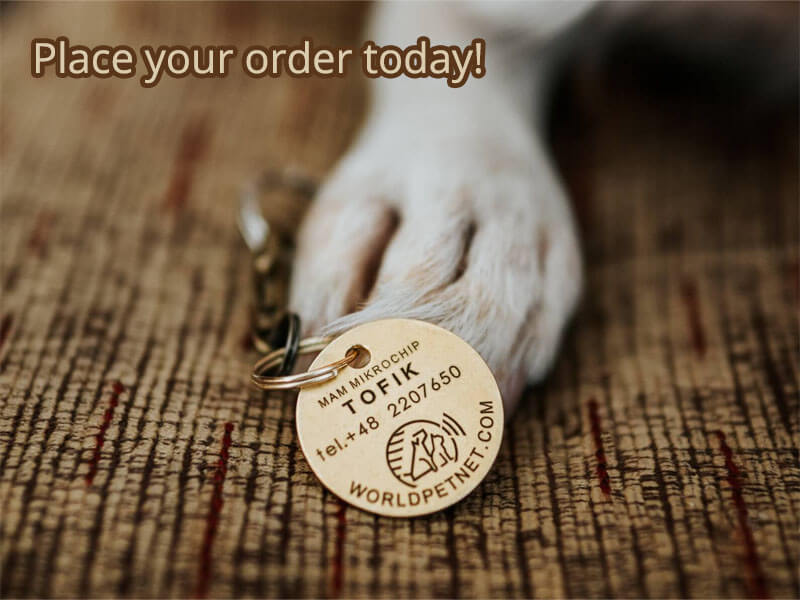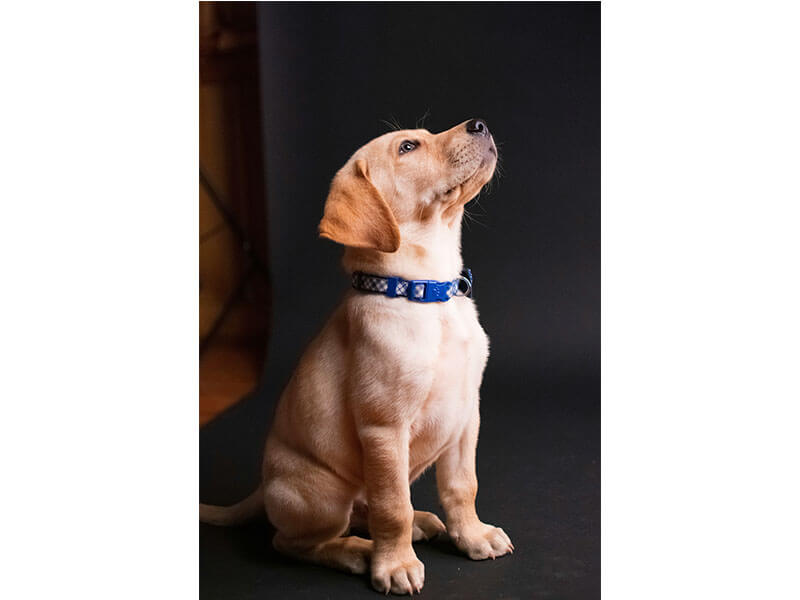The number of registered
animals is growing every day
Published: Oct 4, 2024



The choice of dog collar is usually a very individual matter, depending not only on the animal's character, activity level, height, and weight, but also on whether it belongs to a breed with short or long fur. What encourages owners to choose collars, and what discourages them from purchasing one?
Don’t let the appearance of the collar, its color, or fashion overshadow your common sense and be the basis for deciding on a collar for your puppy! Focus primarily on the fit of the model, its functionality, craftsmanship, and your dog’s comfort. What types of collars are currently available on the market? Which ones work great, and which ones should be avoided?
Classic Collar - Buckle or Clip
One of the most well-known options among collars are those that fasten with a buckle. They are quick to put on but hard to ensure their durability. The buckle can break or unexpectedly open. On the other hand, collars with a clip, which are mainly available in leather, are much more durable and easier to put on for dogs with long fur. However, agility and precision are important when putting them on, as fastening the clip on a restless animal can be quite troublesome.
Slip or Half-Slip Collar
A slip collar can be very dangerous for the animal. If your pet pulls harder on the leash, it will tighten around its neck, potentially leading to health issues and breathing problems. Unfortunately, a dog cannot free itself from such a collar, which can result in choking and even suffocation and death. On the other hand, a half-slip collar has a lock that allows the tightening around the neck to only occur to a certain point - this serves as a clear signal for the dog, without drastic side effects.
Muzzle Collar
In the case of a muzzle collar, it is placed on the snout, not the neck. When choosing this model, pay attention to selecting the right size so that your pet can open its mouth without hindrance and feel comfortable in this unusual but safe collar. This option is often used by people who want to teach their dog not to pull on the leash.
LED Collar
The safety of this model depends on the type of lighting installed in the collar. A collar with strong lights can cause frustration and blind the dog, so a better alternative is lighting and reflectors placed on the collar out of the dog's line of sight.


Name or Engraved Collar
Collars that can have a tag with the pet's name attached, often in an engraved form, are very popular among dog owners. This is a great gadget, but in the case of the dog going missing, it’s not always effective. If the collar slips off the animal's neck or the tag falls off, finding the dog's owner may prove impossible. Therefore, a much better way to identify your pet is microchipping your dog.

When Else Should You Consider Microchipping Your Dog?
If you are a first-time dog owner and, despite your best intentions, are unsure how your four-legged friend will behave with age during walks and whether a given collar will be safe enough so that the puppy cannot slip out, tear it off, or escape, consider microchipping it. Don’t forget to register your dog, so it will be listed in WORLDPETNET - it’s International Animal Database, which will ensure smooth identification of your dog, and the finder will contact you about picking up the puppy.
Electric Collar
Otherwise known as a bark collar, this is a model that should categorically not be used, as it harms the animal due to the electric impulses sent. Remember that the electric collar does not translate to training results for your pet!
Flea and Tick Collar
Simple, usually taking the form of a silicone band or polyester strap with a buckle or clasp. Treat this collar more as a form of protection for your animal against ticks and fleas, not as a model for walking your dog.
Well-Fitting Collar, What Is It?
When selecting a collar that fits your pet, pay attention to its size as well as the circumference of the dog’s neck. If two fingers can easily fit between the neck and the collar, it means you have chosen well! When selecting a collar, it's worth asking for tips from knowledgeable people, such as a dog behaviorist, veterinarian, or experienced seller in a pet store.
When choosing a dog collar, it's important to consider the dog's size, breed, fur length, and temperament. The collar should be comfortable, durable, and appropriately sized to prevent slipping off or causing discomfort.
Classic buckle collars are durable and suitable for dogs with long fur, as they are less likely to cause tangling. However, they can be challenging to fasten on restless dogs. Clip collars are easier to put on but may be less secure if the clip is not sturdy.
A properly fitted collar ensures the dog's safety and comfort. An ill-fitting collar can lead to skin irritations, breathing difficulties, or allow the dog to escape. It's crucial to adjust the collar so it's snug but not too tight, allowing for two fingers to fit between the collar and the dog's neck.



Marking animals with a microchip is the most durable, effective and completely safe method of quick and reliable identification. Every transponder (chip) has a unique number which enables instant identification of the animal and its owner, helping them reunite faster. However, it is important to remember that a chip is just a transponder with an encoded number. It is not a tracking device and contains no data about the animal or the owner! Therefore, in order to identify a chipped dog or cat, it is necessary that a microchip be registered in a national marked animal database...
Read moreIn today's world, responsibility for animal care has become not only a priority for their owners but also a societal issue. One of the most important tools in ensuring animal safety is the chip database. It allows for the quick and efficient recovery of lost pets, which is crucial for protecting their health and well-being.
The introduction of microchipping has significantly improved the effectiveness of efforts to locate lost animals, reducing stress for both owners and their four-legged friends. Registration in the chip database is increasingly required by local regulations, further highlighting the importance of this technology in ensuring comprehensive care for animals.